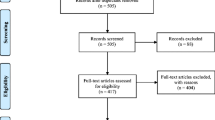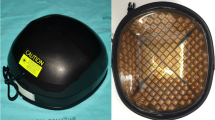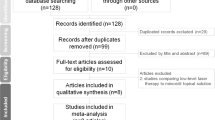Abstract
This double-blind randomized study vs placebo in healthy male and female volunteers demonstrates the positive biologic effect on hair loss and hair regrowth of a pulsed electromagnetic field in combination with essential oils administered according to a regular treatment schedule of 26 weeks. Mean hair count comparisons within the groups significantly favor the treatment group, which exhibited a decrease in hair loss in 83% of the volunteers and a more than 20% hair count increase over baseline in 53% of patients. The process exhibited no side effects or untoward reactions. The histologic examination correlated with the clinical study. A parallel immunohistochemical examination showed an increase in the proliferation index, and when the expression of Ki67 (a cell proliferation marker) is increased, the mitoses are barely visible in the histologic examination. The rationale of this phenomenon is considered to be due to an electrophysiologic effect on the quiescent hair follicle.
Similar content being viewed by others
References
Van Neste DJJ, de Brouwer B, de Coster W. The phototrichogram: analysis of some technical factors of variation.Skin Pharmacol. 1994;7:67–72.
Rushton DH. Comparative evaluation of scalp hair by phototrichogram and unit area trichogram analysis within the same subjects.Acta Derm Venerol. 1993;73:150–153.
Spyratos F, Ferrero-Pous M, Trassard M, et al. Correlation between MIB-1 and other proliferation markers: clinical implications of the MIB-1 cutoff value.Cancer. 2002;94:2151–2159.
Kruze AJ, Baak JP, de Bruin PC, van de Goot FR, Kurten N. Relationship between the presence of oncogenic HPV DNA assessed by polymerase chain reaction and Ki-67 immunoquantitative features in cervical intraepithelial neoplasia.J Pathology. 2001;195:557–562.
Linares-Cruz G, Lequeux Hornsy C, Simony J, Soussaline F. Morpho-histochemical analysis of hair growth in human scalp tissues: effect of a new proposed therapy on hair loss.Eur J Cell Anal Path. In press.
Andrew C, Basset L. The development and applications of pulsed magnetic fields for ununited fractures and arthrodeses.Clin Plast Surg. 1985;12:259–277.
Biedebach MC. Accelerated healing of skin ulcers by electrical stimulation and the intracellular physiological mechanisms involved.Acupunct Electrother Res. 1989;14:43–60.
Alvarez OM, Mertz PM, et al. The healing of superficial skin wounds is stimulated by external electrical current.J Invest Dermatol. 1983;81:144–148.
Robinson KR. The responses of cells to electrical fields: a review.J Cell Biol. 1985;101:2023–2027.
Bourguignon GJ, Wenche JY, et al. Electric stimulation of human fibroblasts causes an increase in Ca++ influx and the exposure of additional insulin receptors.J Cell Physiol. 1989;140:379–385.
Parkinson WC. Electromagnetic fields in biological studies.Ann Biomed Eng. 1985;13:491–514.
Maddin WS, Amara I, Sollecito W. Electrotrichogenesis: further evidence of efficacy and safety on extended use.Int J Dermatol. 1992;31:878–880.
Maddin WS. The biological effects of a pulsed electrostatic field with specific reference to hair.Int J Dermatol. 1990;29:446–450.
Price VH, et al. Changes in hair weight and hair count in men with androgenetic alopecia after treatment with finasteride, 1mg, daily.J Am Acad Dermatol. 2002;46:517–523.
Olsen EA, Dunlap FE, et al. A randomized clinical trial of 5% topical minoxidil vs 2% minoxidil and placebo in the treatment of AGA in men.J Am Acad Dermatol. 2002;47:377–385.
Rushton DH, Ramsay ID, Morris MD, Gilkes JJ. Natural progression of male pattern baldness in young men.Clin Exper Dermatol. 1991;16:188–192.
Author information
Authors and Affiliations
Rights and permissions
About this article
Cite this article
Bureau, J.P., Ginouves, P., Guilbaud, J. et al. Essential oils and low-intensity electromagnetic pulses in the treatment of androgen-dependent alopecia. Adv Therapy 20, 220–229 (2003). https://doi.org/10.1007/BF02850093
Issue Date:
DOI: https://doi.org/10.1007/BF02850093




